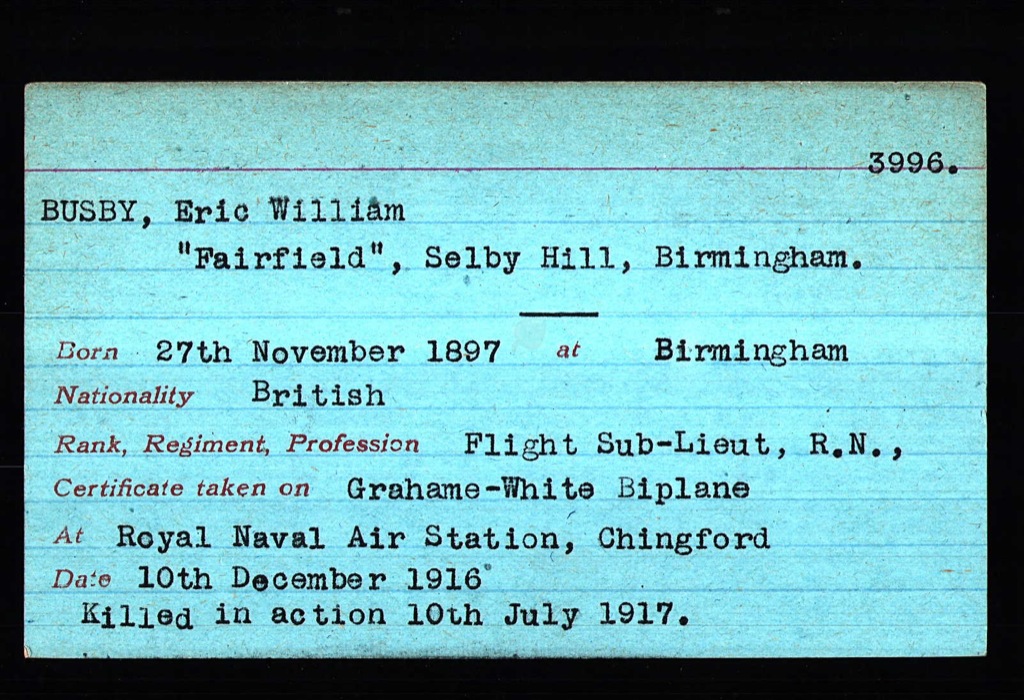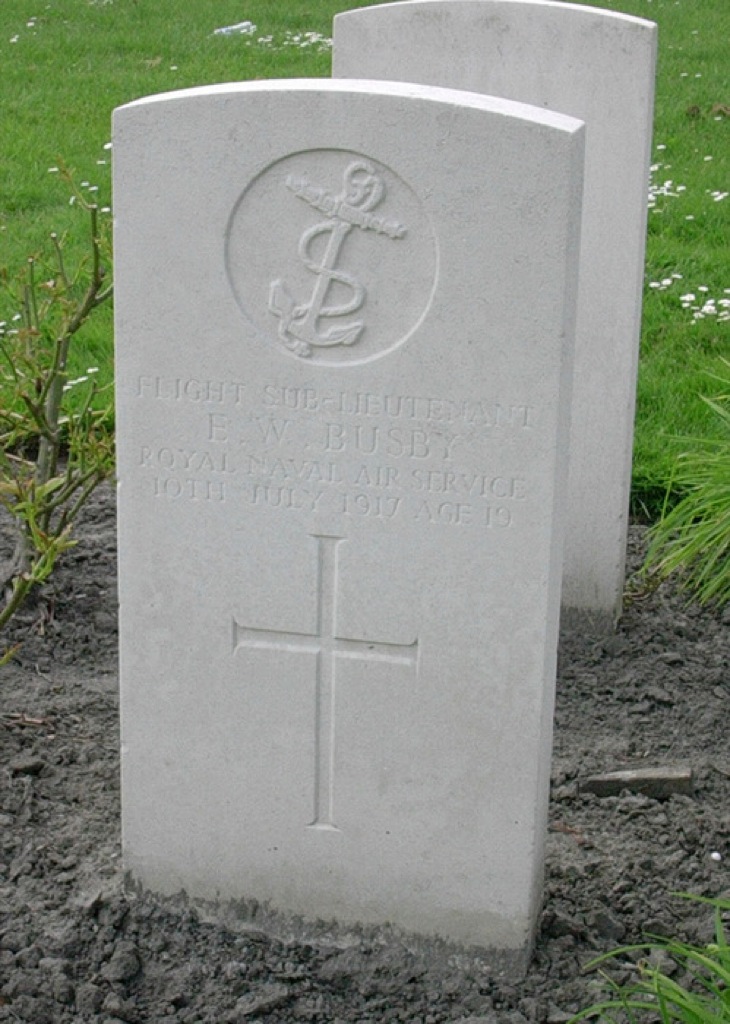Eric William Busby, born on 26th November 1897, was admitted to King Edward’s School in September 1909, having been privately educated by Mr Hume, a KES schoolmaster. He was the second son of George Edmund Busby, a plumber’s merchant, and his wife, Kate, of ‘Fairfield’, 3, Serpentine Road, Selly Park. His older brother Vernon, also an Old Edwardian, died in a flying accident during the war.
At School, Eric was an active member of the Officer Training Corps, though he is little mentioned in the School records. Thereafter he began his engineering internship with Birmingham Small Arms Company.
In July 1916, Eric was commissioned into the Royal Naval Air Service as a Temporary Flight Sub-Lieutenant, obtaining his Royal Aero Club Aviators Certificate in December. He was posted into No. 4 (Naval) Squadron as a single-seat scout pilot. Eric was killed above the Western Front when his machine, Sopwith Camel N6361, crashed near to Ramscapelle following an engagement with four hostile aircraft at 1950hrs on the 10th July 1917. Eric’s machine was the first Sopwith Camel to be lost as a result of enemy action on the Western Front, and he was only the second Sopwith Camel pilot to lose his life on active service. He died aged nineteen. His Commanding Officer wrote of him: “[he was] absolutely without fear, beloved by the men and greatly valued by his officers.” During his short time at the front, Eric was credited with bringing down one kite balloon, four enemy machines, driving down two others and assisting in destroying another two.
Eric is buried in Adinkerke Churchyard, De Panne, and on 29th July 1917, a memorial service was held in St Stephen’s Church, Selly Hill, where he had been a regular communicant.




